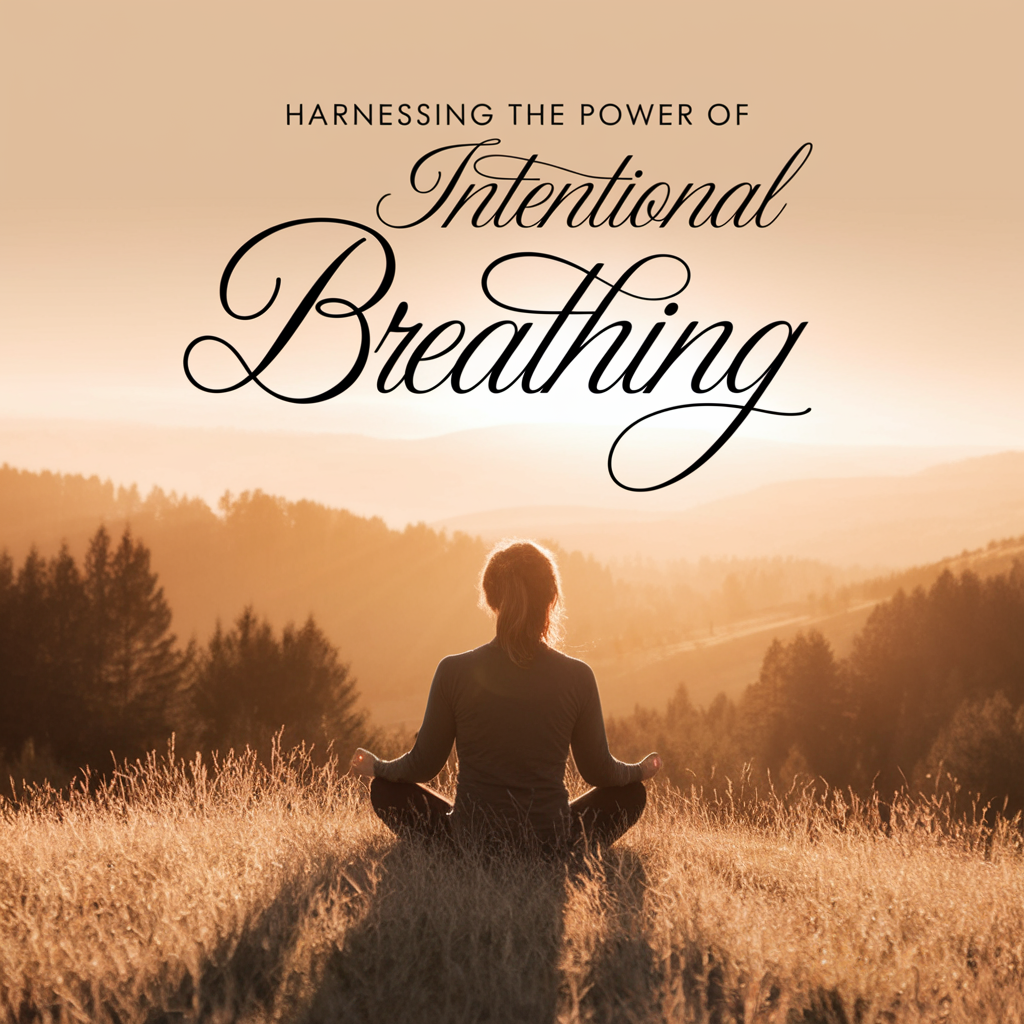Harnessing the Power of Intentional Breathing
Have you ever noticed how a simple, deep breath can shift your entire perspective? I recall a time, after a particularly hectic day at the office, when I found myself feeling overwhelmed. A friend suggested I try intentional breathing. Skeptical but curious, I took a moment to sit quietly, breathe deeply, and focus on the rhythm of my breath. What happened next was nothing short of transformative. Suddenly, the chaos of my day faded into the background, and clarity emerged like a beacon in a foggy harbor. It struck me then that there was something profound about the act of breathing intentionally. Little did I know, this would lead me down a rabbit hole of research and exploration into the myriad benefits of harnessing the power of intentional breathing.
Understanding the Basics of Breathing
Breathing is an automatic function of our body—something we seldom think about. Yet, when we pause to consider it, breathing serves as a bridge between our conscious and subconscious minds. The science behind breathing is both fascinating and complex. Our lungs are designed to bring oxygen into the body, which is essential for cellular function and energy production. But there’s more; the way we breathe can affect our emotional states, stress levels, and overall health.
Studies have shown that the average adult takes about 12 to 20 breaths per minute. However, when we experience stress, anxiety, or even excitement, this rate can double or triple. In contrast, intentional breathing techniques can help us slow down, regain control, and connect deeper with our inner selves. Think of it as hitting the ‘reset’ button on your day.
The Science of Intentional Breathing
So, what do we mean by “intentional breathing”? It’s not just about taking a deep breath; it’s about being purposeful and mindful in how we inhale and exhale. Various techniques exist—like diaphragmatic breathing, box breathing, and 4-7-8 breathing—each with unique benefits. Research suggests that these methods can activate the parasympathetic nervous system, responsible for the body’s rest-and-digest response, reducing stress and promoting relaxation.
Dr. Andrew Weil, a prominent figure in integrative medicine, emphasizes the role of breath in his teachings. He suggests that intentional breathing can lower blood pressure, enhance mental clarity, and even improve heart rate variability—a measure of how well your body adapts to stress. It’s almost like a magic elixir, only it’s free and available to everyone!
Techniques to Explore
As someone who has dabbled in various breathing techniques, I can attest to their effectiveness. Here are a few popular methods to get you started:
- Diaphragmatic Breathing: This technique emphasizes full, deep breaths using the diaphragm. When performed correctly, you’ll notice your belly expands as you inhale, rather than your chest. It’s often used in yoga and can be a great way to calm anxiety.
- Box Breathing: Popularized by Navy SEALs, this technique involves inhaling for a count of four, holding for four, exhaling for four, and holding again for four. It’s a fantastic way to regain focus in high-pressure situations.
- 4-7-8 Breathing: Developed by Dr. Weil, this involves inhaling for four seconds, holding the breath for seven seconds, and exhaling for eight seconds. It’s particularly effective for promoting sleep and relaxation.
Each of these techniques has its own charm, and I encourage you to experiment with them. You might find that one resonates more than the others—just like how some people prefer coffee while others swear by tea (no judgment here!).
The Connection Between Breath and Mental Health
It’s no surprise that our breath is intricately linked to our emotional state. When we’re anxious, we tend to breathe shallowly, which can exacerbate feelings of panic. Conversely, intentional breathing can serve as a grounding tool, helping to center our thoughts and emotions.
Take, for example, the story of a friend who struggled with anxiety. After years of therapy, she discovered the power of intentional breathing. By incorporating it into her daily routine, she found herself better equipped to handle stressful situations. It was as if she had unlocked a secret weapon. “It’s not that the stress disappears,” she explained to me, “but I feel like I have a fighting chance against it now.”
Many therapists and mental health professionals are now incorporating breathing techniques into their practices, recognizing the profound impact it can have on their clients’ well-being. As the stigma around mental health continues to fade, it’s refreshing to see such holistic approaches gaining traction.
Breathing in the Age of Technology
In our fast-paced, tech-driven world, it’s easy to forget the basics—like breathing. We’re bombarded with notifications, deadlines, and endless to-do lists, leading to a collective state of hyperventilation (figuratively speaking, of course). This is where intentional breathing can serve as an antidote.
Apps designed for mindfulness and meditation often include breathing exercises, providing guided sessions that make it easier for newcomers to engage with these techniques. I’ll admit, I was skeptical at first—how could an app understand my breathing patterns? But after giving it a shot, I found that having a guided approach helped me stay focused.
Creating a Daily Breathing Practice
Integrating intentional breathing into your daily routine doesn’t have to be a chore. In fact, it can be quite the opposite! Here are some simple tips to help you cultivate a sustainable practice:
- Start Small: Begin with just a few minutes each day. As you become more comfortable, you can gradually increase the duration.
- Set a Reminder: Whether it’s a timer on your phone or a sticky note on your computer, reminders can help you carve out time for breathing.
- Pair It with Other Activities: You can practice intentional breathing while walking, meditating, or even during your morning coffee. (Just beware of over-caffeinating!)
It’s important to approach this with a sense of curiosity and playfulness. I often like to think of it as a mini-vacation for the mind—an opportunity to escape the whirlwind of daily life, if only for a moment.
Breathing and Physical Performance
For athletes, intentional breathing can be a game-changer. Many professional athletes have adopted breathing techniques as part of their training regimens. Take a deep dive into the world of sports, and you’ll find that breath control is often a key component of performance optimization.
Consider the practice of yoga, which has long been celebrated for its emphasis on breath. Athletes from various disciplines have turned to yoga not just for flexibility but also for the mental clarity and focus that intentional breathing promotes. In fact, numerous studies indicate that athletes who consciously control their breathing during high-pressure situations often outperform those who don’t.
I remember watching an interview with a professional runner who shared how he had trained himself to breathe rhythmically during races. “It’s like a metronome,” he said, “keeping me in sync with my body.” There’s something poetic about that analogy, isn’t there?
Breathwork and Creativity
Beyond the physical and emotional benefits, intentional breathing can also open the floodgates of creativity. Numerous artists, writers, and musicians have attested to the power of breath in sparking inspiration. When we breathe mindfully, we create space for new ideas to emerge.
Take a moment to consider—when was the last time you felt “stuck” creatively? For me, there have been days when my mind felt like a tangled ball of yarn. However, after a few intentional breaths, suddenly things would start to flow. It’s almost magical, how a simple act can unearth hidden nuggets of creativity.
Challenges and Misconceptions
As with any practice, there are challenges to overcome. One common misconception is that breathing exercises are only for those seeking relaxation or stress relief. In reality, intentional breathing can be beneficial for anyone, regardless of their current state of mind.
Another challenge is the tendency to overthink the process. “Am I doing it right?” is a question I’ve asked myself countless times. The truth is, there’s no “right” way to breathe intentionally. It’s about finding what feels good for you and embracing the journey.
The Future of Breathing Practices
As we continue to grapple with the demands of modern life, the importance of intentional breathing will only grow. Whether through therapy, meditation, or simply taking a moment to pause, individuals are increasingly recognizing the power of their breath as a vital tool for well-being.
Incorporating intentional breathing into schools, workplaces, and community centers could foster a culture of mindfulness and resilience. Imagine a world where everyone took a moment to breathe deeply before responding to a stressful email or engaging in a difficult conversation. It sounds utopian, doesn’t it?
Conclusion: Embracing the Breath of Life
Ultimately, harnessing the power of intentional breathing is about more than just relaxation or stress reduction. It’s an invitation to engage with life more fully, to cultivate awareness, and to connect with ourselves and those around us. In a world that often feels chaotic and overwhelming, our breath serves as a constant reminder of the present moment.
So, the next time you find yourself racing through life, take a step back, inhale deeply, and exhale slowly. You might just discover a newfound clarity—and perhaps a little bit of joy in the process. After all, life is a series of breaths; we might as well make each one count.






